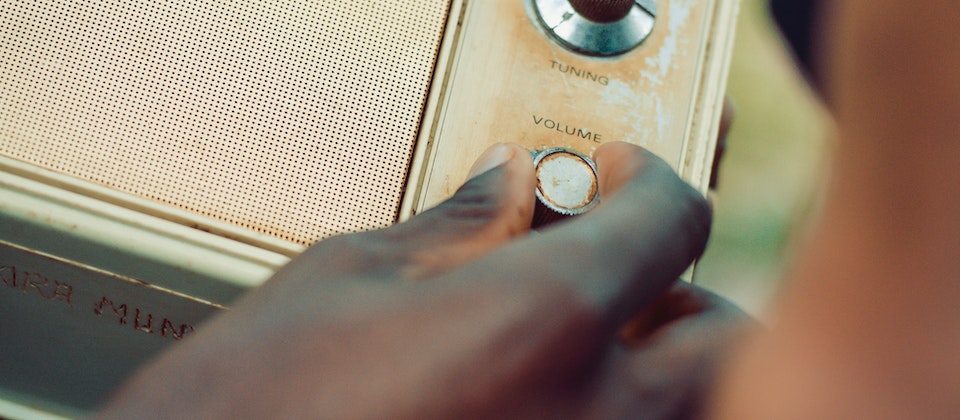What do you do when a client sends back the print advertisement they’d asked for with the words: “This ad is too good. Please reduce its selling power”? Being asked to turn down the volume like this doesn’t happen often. In fact, it’s only happened once in my 20-year career.
As it turned out, the client had an understandable reason for this rather unusual request: The company was a successful, family-owned business that sold industrial equipment, each unit of which was priced at between one and 5 million Euros. They loved the ad, but believed that it might attract too many buyers. They were concerned that they might not be able to produce enough units to answer the demand.
And rejecting perfectly good customers wasn’t something they wanted to become known for!
Pioneering bad
So there I was, faced with turning down the volume on a perfectly good ad. The first step was for me to park my professional pride. After all, I’m here to help my customers solve their problems or make the most of new opportunities – and that means respecting their limitations.
I remember sitting at my desk, running through the options in my head. Not having tried to make a good ad worse before, I wasn’t sure what the best practices were for such a task. A few minutes spent researching the topic yielded nothing meaningful – and I quickly realized that I might be a pioneer in the field of making good ads worse.
If that was the case, I wanted to do the very best job I could.
What to do?
Initially, I admit, I considered some crazy, fast-track options. Like keeping everything just as it was, but switching the contact details to a competitor. But a quick online search after someone had seen the ad would foil that trick. And the company did, after all, want some effect from the campaign, albeit limited.
I then looked at the body copy. Should “It’s remarkably easy to operate” be removed, leaving an element of doubt about usability in the reader’s mind instead? Or should I create something more effective, such as: “After initial difficulties, you’ll probably consult the instruction manual and fail to find the answers you need. You’ll then call our customer support and be cut off part way through the multi-layer menu system”?
A statement like this, of course, would likely put a sizeable dent in the number of sales enquiries. But it would also resonate badly with the client’s brand – and damaging a B2B brand could have adverse effects for years to come. So more subtle means were obviously called for.
At this point, some might wonder why I didn’t just start from the beginning again, creating an entirely new, but not as compelling, version. The client, however, was enthusiastic about the general angle of the ad and its visual execution – and, in any case, the budget for coming up with a new concept had already been spent.
Un-global
Casting about, I decided that another way to reduce the threat of sales might be to go geographical on the problem. You see, the ad was destined for trade magazines around the world. So normally, you’d avoid images or symbols that might be culturally offensive. And you’d give some thought to colors, too, avoiding proportionally heavy use of any that specific audiences might associate with death, betrayal or poor wifi reception.
If I were to throw caution to the winds and introduce both of these deterrents, I figured it might cut off Asia, for example, or send the Middle East packing. But there were two problems with this approach: First, introducing a culturally offensive image would risk damaging the client’s precious brand. And second, despite a multitude of cautionary tales about the subject, the reality of today’s multi-cultural, global media landscape is that stepping on cultural toes often takes a misstep of epic proportions. Neither my client nor I was ready to go that far or to handle the resulting publicity.
There were, of course, many other options. I could suggest keeping the ad as it was but moving it to a less prominent position in the publication. The key image could be removed, leaving just a headline, body copy and the client’s logo to do all the work. I could double the amount of text – an approach guaranteed to drive away readers of print ads (but not necessarily of online articles or posts).
Saved by the bell
How did I end up fixing the problem? It was simple, really. I decided to do the complete opposite, adding even more power to the ad. Why? Because this was a perfect opportunity to let the market know just how popular my client’s products had become. The new, adjusted ad would continue to encourage maximum sales – with the simple addition of a splash trumpeting “Just 10 left for 2012 delivery” sealing the deal.
The client loved the idea. The ad ran, and all 10 units were sold within days – with several more placed on back order for customers who were convinced it would be worth the wait.
If you’ve got a similar story from the world of advertising or beyond, I’d love to hear how you solved it – surely I can’t be the only one who has received a request to make something good worse!

